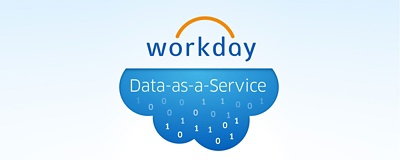Customers that opt-in to this new service will remain in complete control of their data, just as always with our Workday services. If a customer chooses to participate, they will be able to select the metrics—such as average time to fill a new position or average attrition rate—that they would like to contribute to the service to gain access to the respective benchmarks. As contributors, they will remain fully anonymous. Our customers’ privacy and security are paramount, and we will have the enterprise infrastructure and policies in place to ensure individual customer metrics will not be identifiable.
Customers aren’t satisfied with the current options they have for benchmark data. We knew we could partner with them to deliver something better, with real-time, drillable information that delivers the kind of business benchmarks that businesses require in today’s world.
Why did Workday decide to deliver DaaS?
First and foremost, our customers asked us to. The pace of change, competitive pressure, and new worker expectations continue to increase, and our customers understand that some of the richest information available to manage these pressures—while growing their people and businesses—resides in Workday. They also aren’t satisfied with the current options they have for benchmark data. They find it stale, expensive, and basic, and we knew we could partner with our customers to deliver something better, with real-time, drillable information that delivers the kind of business benchmarks that businesses require in today’s world.
What kind of information is in Workday?
Workday has more than 1,350 customers, including some of the world’s largest companies and most innovative companies. Collectively, this global community represents more than 19 million workers, and the data in our system encompasses everything from organizational structures and compensation data to information around skills and financial metrics, such as revenue and days sales outstanding. It’s a rich repository that represents the real-time reality of organizational design and how the global workforce is changing.
What sort of benchmarks are Workday exploring?
We’re just starting to work with customers on defining the benchmarks we will cover, but we see a wide range of opportunities based on early input. For example:
- Workday Usage Benchmarks. Many of our customers want to understand how their overall usage of Workday measures against others. Are they behind the curve on deploying Workday on mobile devices globally? Are peers using more features and functions in the system than they are? There are dozens of metrics we can benchmark against to help our customers take full advantage of what Workday has to offer.
- Workforce Management Benchmarks.这些将使客户得到立即sessment of how they are performing as compared to peers around key HR performance indicators such as average attrition rate, time to fill new positions, span of control, and employee career mobility. Customers have also told us they would like to understand broader performance with questions such as: How are we tracking against diversity goals versus our peers? Are we closing candidates for top positions faster or slower than others? How do we stack up when it comes to compensation and total rewards?
- Workforce Development Benchmarks. This set of benchmarks would be more tailored to employee development and engagement. For example, right now there are tens of millions of skills listed in Workday representing more than 19 million workers. That’s pretty powerful when you think about the kinds of questions customers could answer, such as: Are new skills emerging for key positions in my industry? Are peers using a higher percentage of indirect labor or contingent workers for certain skills? Is there a more concentrated group of top performers with certain skills in certain regions? How engaged is my workforce compared to peers?
- Financial Management Benchmarks.Down the road, there is an exciting opportunity for customers to have benchmarks that help them better connect workforce development to financial success and strategic business goals. For instance, there are some incredible possibilities in an industry like professional services where people and finance come together around service-based projects. Customers could answer questions like: What sort of skills exemplify top performers in my industry that drive projects generating the highest revenue? Is there a type of team makeup that leads to lower-than-average time to profitability for new products and services?
When will the benchmarking service be available to customers?
We intend to deliver the benchmarking service in the second half of calendar year 2017.
How are you working with customers on this moving forward?
We have strong support from our Executive Advisory Council (made up of key customers at the highest levels in their organizations) to move forward, and interest is expanding among other customers worldwide. We are beginning our official Design Partner program immediately with a group of strategic customer organizations that were among the first to indicate a strong interest in contributing to this service.






